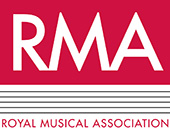The Eleventh International Conference on Music and Sonic Art (MuSA 2022) took place at Middlesex University, London, on 22-23 September 2022.
The conference included 22 presentations by delegates from the UK, Singapore, Hong Kong, Republic of Ireland, USA, Portugal and Canada. As there were no parallel sessions, each delegate was able to listen to the presentations of all the other delegates, and lively scholarly exchanges continued over coffee/tea and lunch, creating a lovely sense of an interdisciplinary academic community. Due to ongoing issues related to the Covid-19 pandemic globally, some international conference delegates had to resort to an online presentation format; the technological support the hosting institution provided in this connection was invaluable, and the big screen placed in the conference hall allowed overseas presenters to be part of the conference community.
The international Music and Sonic Art conference (MuSA) is a well-established and eagerly anticipated annual event that has been running since 2010. Until the start of the Covid-19 pandemic, the conference organisers collaborated with the Musikhochschule and the Institute for Music Informatics and Musicology in Karlsruhe, Germany. MuSA is a unique event that brings together two research communities that have remained separate traditionally. Since its emergence as a distinct contemporary art form in the 1980s – though precedents can be traced to Russolo, Duchamp and the Fluxus “happenings” – Sonic Art evolved as an academic discipline with a growing body of theoretical and critical discourses that articulate its individual characteristics and perspectives. Although the first book to use the term “Sonic Art” developed from Trevor Wishart’s practice as an electroacoustic composer (On Sonic Art 1985/1996), various arguments have been put forward to promote Sonic Art as a practice and academic discipline that is categorically different from Music.
The organisers of MuSA bring a different perspective to the relationship between these two areas – one that builds on the historical, theoretical and practical connections, continuities and similarities between them, along a broad spectrum of hearing and listening practices, as well as art-making using sound. Indeed, the presentations given during MuSA 2022 attested to the fact that contemporary practitioners of Music and Sonic Art share many theoretical and aesthetic approaches and concerns.
In accordance with the main theme of MuSA 2022, namely Sounding Identities, the presenters explored various aspects of artistic, cultural, social, national, embodied and sensory identity construction, as these play out in Music and Sonic Art practices. “Music and Identity” has recently emerged as a thriving research area with an already substantial literature, including a major handbook published by Oxford University Press in 2017. Extending these enquiries into all kinds of artistic practices that use sound, the conference opened up new themes and approaches that have not so far been systematically explored in music scholarship.
One of these themes concerned the connections between particular geographical locations and the identities they engender. In this connection, Gabriela Mayer and Regina Crowley (MTU Cork School of Music, Ireland) talked about their joint project titled “Notes to a Star” – a sound installation specifically designed for the Blackrock Castle Observatory in Cork and staged as a live event that brough together Beethoven and Shakespeare. As part of the project The Blackrock Castle Observatory encoded and beamed the event to a distant exoplanet and its star. Solomon Shiu (University of Oxford) discussed how a particular location in Hong Kong, the Victoria Park, has become a site for the creation of a diaspora identity for migrant workers, who stage musical performances in that location every Sunday.
A presentation by Ren Gui and Ryo Ikeshiro (City University of Hong Kong) explored how the music and sounds experienced in a particular nightclub in Beijing support LGBT+ communities in shaping their identities. Georgios Varoutsos’ (Queen’s University, Northern Ireland) presentation similarly focused on a single geographical location and explored the potential of an immersive installation and binaural soundwalk around the Peace Wall in Belfast to generate new opportunities for conflict transformation in the local communities.
Another emergent theme of the conference concerned the relationship between nature and aural awareness or listening practices. In his presentation titled “Ear trumpet: performative investigations in sonic geology”, Jonathan Croose (Arts University Bournemouth, UK) talked about a practice-based project where audiences are invited to “discover” sounds trapped in the earth, using “ear trumpets” and imaginative transportations. The presentation by Alfonso Benetti Junior (University of Aveiro, Portugal) also concerned a practice-based project, this time using the sounds and images of the river Ria de Averio to tell the story of Undine, and thus construct a novel identity for this mythical figure.
While many of the contributions concerned practice-based or artistic research projects, there were also analytically (Edwin Hillier, Royal College of Music; Ed McKeon, Goldsmiths College, University of London; Diego Carvalho, University of Florida; Daniel O’Meara, Richmond, the American University in London), conceptually (Mine- Doğantan-Dack, University of Cambridge and University of Manchester), and historically (Sean Williams, The Open University) oriented presentations.
A highly stimulating keynote presentation, titled “Sounding out: negotiating artistic identities in complex times” was given by Raymond MacDonald (University of Edinburgh), who also improvised on his saxophone while the audience participated in his playful musicking by using cow bells. MacDonald discussed how musical experiences and practices help construct social, cultural national, political and artistic identities. Debunking the myth of innate talent, he argued that we are all musical and have musical identities, and shared a new framework for conceptualising musical identities – namely Musical Identities in Action, which foregrounds these identities as dynamic, embodied and situated.
The conference committee thanked the Royal Musical Association and Middlesex University for generously supporting MuSA 2022 and expressed their intention to resume MuSA as an annual event.
